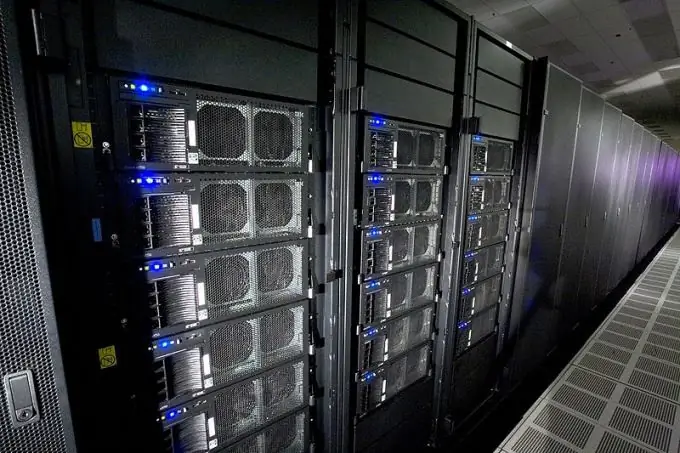Despite the fact that many people associate the word "supercomputer" with complex and expensive equipment that occupies the area of a small hall, in practice today a small car of this class can be built at home. All it takes is a few modern game consoles.

Instructions
Step 1
Buy eight Sony PlayStation 3 game consoles manufactured before March 28, 2010. You can find them, for example, on online auctions. Make sure all machines have a firmware version older than 3.21 (not inclusive). In newer firmware, the ability to install Linux is disabled. When purchasing consoles, in no case try to connect them to the Internet or run games on them before installing Linux - an automatic firmware update to the latest one may start.
Step 2
Take care of the power supply of the supercomputer. Considering that the PlayStation 3 consumes 400 W of power, and a supercomputer made up of eight consoles is 3200 W, you should use an extension cord rated for a current of 20 A (with a margin, since the real current consumption will be 14, (54) A, plus add currents consumed by TVs or monitors) The socket must also withstand the current with the same margin. The same applies to the wiring, as well as the machine in the dashboard and the meter. Such a supercomputer cannot be used with Soviet-built houses with aluminum wiring.
Step 3
Connect a USB keyboard and mouse to each set-top box. You can connect a monitor or TV to them one at a time, but if space and power capacity allow, you can equip all set-top boxes with display devices in the cluster. When switching a monitor or TV from one machine to another, unplug it.
Step 4
For each set-top box, install a specific distribution of Fedora 8 operating system, designed for processors with the PowerPC instruction set (abbreviated as ppc). The usual x86 version of Fedora, which is familiar to many, will not work. To install, you will need a special flash drive image located at:
www.ps3cluster.org/distros/ps3.zip Configure the STB so that it boots from a USB stick by default. Unpack the image on it, connect it to the machine and reboot it. Insert the Fedora 8 DVD and install it. Repeat for the rest of the boxes
Step 5
Connect all set-top boxes to a router connected to unlimited internet. It must be configured with DHCP. If the router does not have eight free ports, use an additional hub. Reboot Fedora on all machines and they will automatically get their IP addresses.
Step 6
But eight set-top boxes that do not interact with each other in any way are not yet a supercomputer. You should install on each of them packages that will provide such interaction: yum install openssh-server
yum install openssh-clients
yum install nfs-utils
yum install openmpi openmpi-devel openmpi-libs Set one of the machines as the master - the rest will be controlled by it. On this machine, in the / etc folder, create a file openmpi-default-hostfile and write in it the IP addresses of the other set-top boxes included in the supercomputer. Please note that each time you restart the machines, the router may assign them addresses differently, and this file will have to be redone. This can be avoided by switching the cars in the same order each time.
Step 7
Download the file from the following address:
www.ps3cluster.org/distros/pi.c Place it in the openmpi folder on the host machine. Run the command
mpicc -o Pi Pi.c This will produce an executable file named Pi. Place it on all machines, and run only on the main one:
mpirun -np N./Pi
where N is the number of iterations. Your supercomputer will start calculating the value of π. Since a supercomputer consumes enormous power by household standards, using it for more than twenty minutes a day is financially inefficient.






